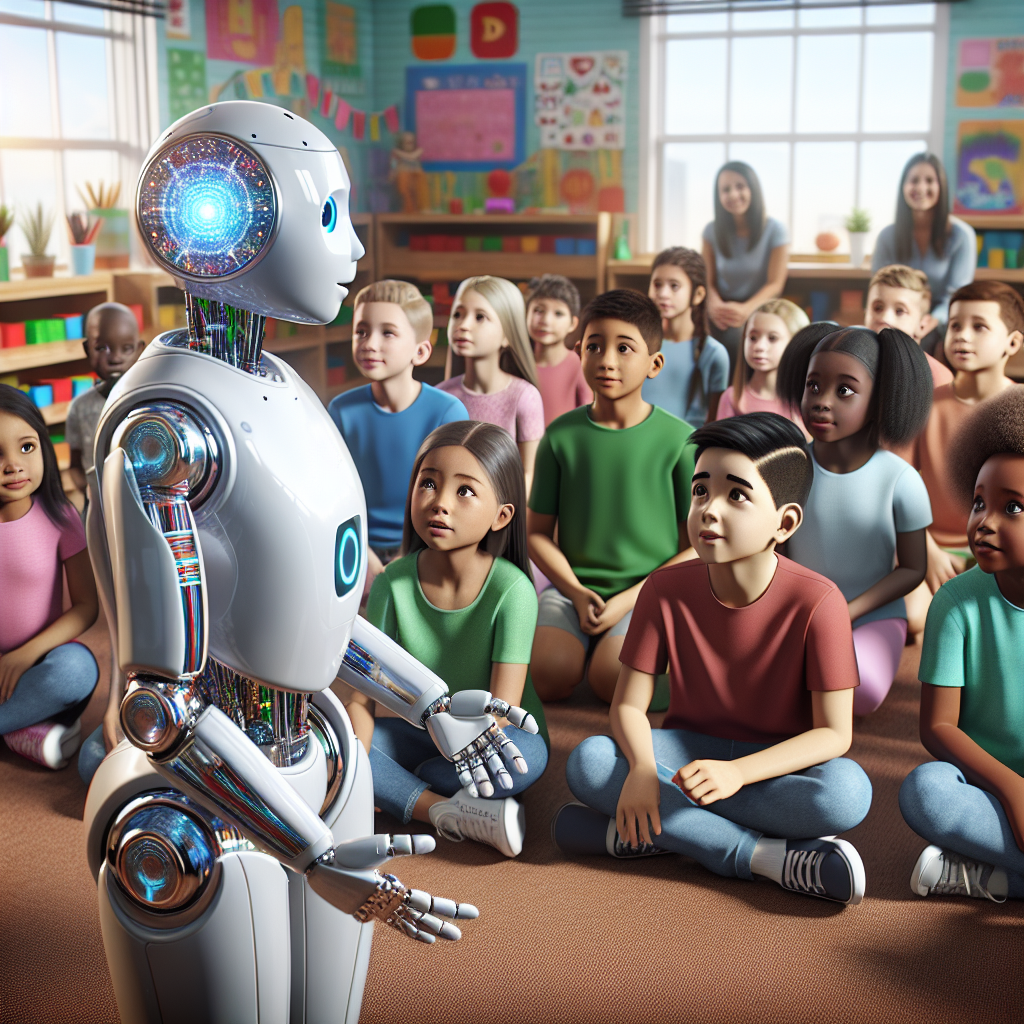In recent years, there has been a growing recognition of the impact of trauma and adversity on students’ academic performance and overall well-being. Traumatic experiences such as abuse, neglect, violence, or natural disasters can have long-lasting effects on a student’s ability to learn, regulate emotions, and form healthy relationships. As educators, it is essential to provide support and resources for students who have experienced trauma in order to help them succeed in school and in life.
One promising tool that has emerged in the field of education is artificial intelligence (AI). AI has the potential to revolutionize the way we support students with trauma and adversity by providing personalized and timely interventions that are tailored to their specific needs. In this article, we will explore the role of AI in supporting students with trauma and adversity, as well as address some common questions and concerns about this emerging technology.
The Role of AI in Supporting Students with Trauma and Adversity
1. Early Identification and Intervention: One of the key benefits of AI is its ability to analyze large amounts of data quickly and accurately. This can be particularly useful in identifying students who may be at risk of experiencing trauma or who are already struggling with the effects of trauma. By using algorithms to analyze factors such as attendance records, academic performance, and behavioral patterns, AI can help educators identify students who may need additional support and intervention.
2. Personalized Learning: AI can also be used to create personalized learning experiences for students with trauma and adversity. By analyzing a student’s individual strengths, weaknesses, and learning styles, AI can recommend specific interventions, resources, and strategies that are tailored to their needs. This can help students feel more supported and engaged in their learning, leading to improved academic outcomes.
3. Emotional Support: Another important role of AI in supporting students with trauma and adversity is providing emotional support. Chatbots and virtual assistants can be used to provide students with a safe space to express their feelings, practice coping skills, and receive feedback and guidance. These tools can help students develop emotional regulation skills and build resilience in the face of adversity.
4. Monitoring Progress: AI can also be used to monitor students’ progress over time and track changes in their academic performance, behavior, and emotional well-being. By analyzing data trends and patterns, AI can help educators assess the effectiveness of interventions and make adjustments as needed. This can lead to more targeted and efficient support for students with trauma and adversity.
5. Accessibility and Equity: AI has the potential to increase accessibility and equity in education by providing support to students who may not have access to traditional forms of support, such as counseling or therapy. AI tools can be accessed remotely, allowing students to receive support anytime, anywhere. This can help bridge the gap between students who have access to resources and those who do not, leading to more equitable outcomes for all students.
Frequently Asked Questions (FAQs)
Q: Is AI replacing human support for students with trauma and adversity?
A: AI is not meant to replace human support for students with trauma and adversity, but rather to complement and enhance existing support systems. Human support, such as counseling, therapy, and mentoring, are essential for providing emotional connection and empathy to students in need. AI can help augment these services by providing additional resources, interventions, and monitoring tools to support students in their journey to healing and success.
Q: How can AI ensure student privacy and data security?
A: One of the key concerns with using AI in education is ensuring student privacy and data security. Educators and developers must adhere to strict guidelines and regulations, such as the Family Educational Rights and Privacy Act (FERPA), to protect students’ personal information. AI systems should be designed with robust security measures in place to safeguard student data and ensure confidentiality.
Q: Are there ethical considerations when using AI to support students with trauma?
A: Yes, there are ethical considerations to take into account when using AI to support students with trauma and adversity. Educators and developers must consider issues such as consent, transparency, and bias when designing and implementing AI tools. It is important to prioritize the well-being and autonomy of students and ensure that AI is used responsibly and ethically to support their needs.
Q: How can educators integrate AI into their support systems for students with trauma?
A: Educators can integrate AI into their support systems by collaborating with experts in the field of trauma-informed care and technology. By working together, educators can develop AI tools that are tailored to the specific needs of students with trauma and adversity. Educators should also provide training and support for students and staff on how to use AI tools effectively and ethically.
In conclusion, AI has the potential to revolutionize the way we support students with trauma and adversity by providing personalized, timely, and accessible interventions. By leveraging the power of AI, educators can create more inclusive and supportive learning environments that help all students thrive. It is essential for educators to stay informed about the latest developments in AI and to collaborate with experts in the field to ensure that AI is used responsibly and ethically to support students in need.

